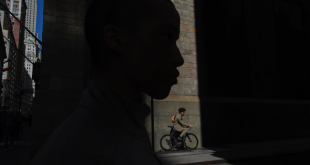Rather than weave a story out of the speed guidance information issued on Friday to councils by the Department of Transport below are the pertinent paragraphs, all of which will be like manna from heaven for pedestrian and cyclist organisations aiming to get motorists to slow down not just a little but a lot.
Councils will also like what they read here because it means they will have greater flexibility to set speed limits that better suit their local circumstances, and there will also be more flexibility to install average speed cameras, the technology that can’t be fooled by motorists slowing down when spotting a speed camera and then speeding up again.
The needs of cyclists and pedestrians are extremely well covered in the new document.
============
The Department for Transport’s vision is for a transport system that is an engine for economic growth but one that is also greener and safer and improves quality of life in our communities. We also want our roads to become safer, less congested and less polluted. We want to encourage sustainable local travel and economic growth by making public transport and cycling and walking more attractive and effective, promoting lower carbon transport and tackling local road congestion.
+++++++
Roads should be designed so that mistakes made by road users do not result in death or serious injury. Effective speed management is part of creating a safe road environment which is fit for purpose. It involves many components designed to work together to require, encourage and help road users to adopt appropriate and safe speeds below the speed limit. Speed limits…should be seen by drivers as the maximum speed rather than as a target speed at which to drive irrespective of conditions.
+++++++
…national [speed] limits are not…appropriate for all roads. The speed limit regime enables traffic authorities to set local speed limits in situations where local needs and conditions suggest a speed limit which is different from the respective national speed limit.
+++++++
Traffic authorities are asked to: …consider the introduction of more 20 mph limits and zones, over time, in urban areas and built-up village streets that are primarily residential, to ensure greater safety for pedestrians and cyclists.
+++++++
Different road users perceive risks and appropriate speeds differently, and drivers and riders of motor vehicles often do not have the same perception of the hazards of speed as do people on foot, on bicycles or on horseback. Fear of traffic can affect peoples’ quality of life and the needs of vulnerable road users must be fully taken into account in order to further encourage these modes of travel and improve their safety. Speed management strategies should seek to protect local community life.
+++++++
On rural roads there is often a difference of opinion as to what constitutes a reasonable balance between the risk of a collision, journey efficiency and environmental impact. Higher speed is often perceived to bring benefits in terms of shorter travel times for people and goods. However, evidence suggests that when traffic is travelling at constant speeds, even at a lower level, it may result in shorter and more reliable overall journey times, and that journey time savings from higher speed are often overestimated…
+++++++
Traffic authorities can, over time, introduce 20mph speed limits or zones on: Major streets where there are – or could be – significant numbers of journeys on foot, and/or where pedal cycle movements are an important consideration, and this outweighs the disadvantage of longer journey times for motorised traffic.
+++++++
Urban roads by their nature are complex as they need to provide for safe travel on foot, bicycle and by motorised traffic. Lower speeds benefit all urban road users, and setting appropriate speed limits is therefore an important factor in improving urban safety.
+++++++
Roads suitable for 40 mph are generally higher-quality suburban roads or those on the outskirts of urban areas where there is little development. They should have good width and layout, parking and waiting restrictions in operation, and buildings set back from the road. These roads should, wherever possible, cater for the needs of non-motorised road users through segregation of road space
+++++++
20mph In streets that are primarily residential and in other town or city streets where pedestrian and cyclist movements are high, such as around schools, shops, markets, playgrounds and other areas, where motor vehicle movement is not the primary function.
+++++++
… recommended speed limits for roads with a predominant motor traffic flow function. If walking, cycling, horse riding, community or environmental factors are particularly important on any road section, consideration should be given to using the lower limit.
+++++++
While routine enforcement should normally only be considered after other speed management measures have been considered, there may be occasions where the use of average speed cameras may offer a solution through calming traffic speed over a stretch of road. The Department has received a small sample of evaluation data of average speed cameras at non-roadworks sites from some local partnerships, and this data suggests a reduction in the percentage of motorists exceeding the speed limit from 55% before installation of cameras, to 18% afterwards, and an average reduction of killed and seriously injured casualties (KSI) per km of around 69%…
 BikeBiz Bicycle and cycling retail news
BikeBiz Bicycle and cycling retail news



